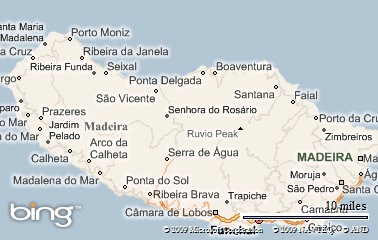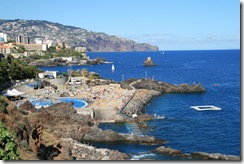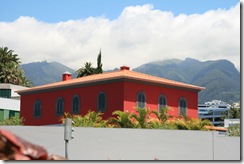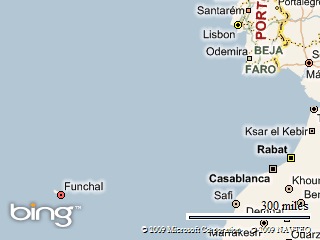 This is a picture of the author and the Taoiseach, Brian Cowen, that was taken in Boston in 2005. Every now and then Mr Cowen emerges from his shell and makes a really compelling, even passionate, speech and he did so last Thursday, June 11, in Dáil Éireann in the course of a debate on the report of The Ryan Report into child abuse in industrial schools. Many other contributors also made excellent contributions, including Ruari Quinn TD and Michael D Higgins TD. It was noted, that for once, there was no game-playing by the politicians in this debate. Their genuine sense of outrage and sense of purpose was clearly evident.
This is a picture of the author and the Taoiseach, Brian Cowen, that was taken in Boston in 2005. Every now and then Mr Cowen emerges from his shell and makes a really compelling, even passionate, speech and he did so last Thursday, June 11, in Dáil Éireann in the course of a debate on the report of The Ryan Report into child abuse in industrial schools. Many other contributors also made excellent contributions, including Ruari Quinn TD and Michael D Higgins TD. It was noted, that for once, there was no game-playing by the politicians in this debate. Their genuine sense of outrage and sense of purpose was clearly evident.
The previous day, Wednesday June 10th there was a march at lunch time from the Garden of Remembrance to Leinster House that attracted about 5,000 participants. Many travelled from well outside Dublin to demonstrate solidarity. By all accounts it was a very dignified, sombre occasion but many of the victims interviewed in the media expressed what was a most deep-seated sense of relief as a result of the public recognition afforded them. President McAleese is to host them shortly at Áras an Uachtaráin. The President also made a statement on the findings of The Ryan Report. Victims met Mr Cowen on the evening of the march.
The Commission to Inquire into Child Abuse. was established in 2000 and their report was published its report on 20 May. Mr Cowen, in his contribution to the debate said that the Report is regarded as one of the most important reports, and almost certainly the gravest, ever published in the history of the State. It contains a shattering litany of abuse of children in care in Ireland over many decades. He acknowledged that it presents a searing indictment of the people who perpetrated that abuse, of the religious congregations who ran the institutions in which it took place, and of the organs of the State which failed in their duty to care for the children involved.
Cowen’s predecessor, Bertie Ahern TD, apologised to all victims on behalf of the State on 11 May 1999, ten years prior to the publication of the Report. The first recommendation of The Ryan Report is that a memorial be erected to the victims and that it be inscribed with the words of the Ahern apology.
“On behalf of the State and of all citizens of the State, the Government wishes to make a sincere and long overdue apology to the victims of childhood abuse for our collective failure to intervene, to detect their pain, to come to their rescue.”
The Government has accepted the recommendation of the Commission and admitted that the abuse of children, and the suffering they endured, occurred because of failures of systems and policy, of management and administration and of senior personnel who were concerned with industrial and reformatory schools. They are also deeply conscious that while the events inquired into by the Commission occurred, for the most part, many years ago, their consequences continue and live on in the burdens that the victims carry day by day. Cowen paid tribute to the dignity, courage and fortitude of witnesses who came forward to the Commission to recall events that happened those years ago and he remembered those former residents now deceased
The evidence presented in it makes clear that it was a correct decision to establish a system of redress which did not require victims to rely on the limitations of a compensation system based on litigation through the courts. Some people have had criticisms to make about the manner in which the redress board dealt with issues. However, the Taoiseach stated that it was right to have an approach which enabled survivors to be compensated without having to go through the courts and with a very different approach to proof and evidence.
This Report has radically changed the public perception of what went on in the institutions and the accounts of victims on radio talk shows have been very compelling. It has vindicated once and for all what was said over the years by former residents and by some others on their behalf. It is no longer possible to deny or to doubt. The Commission has spoken, the case is closed.
The catalogue of horror and terror that was visited over many years on children in the care of religious congregations, placed there by the State, is absolutely appalling. It is made even more appalling, if that is possible, by the fact that those who perpetrated the abuse had promised to uphold and practise the gospel of love and belonged to congregations founded to serve the very noblest ideals. It is worsened, too, by the repeated failure of the State, which placed the children in these institutions, to inspect or regulate the conditions in which they were held or the treatment to which they were subjected. The congregations should have loved them and the State should have cared about them. Neither did.
The report contains such horrific stories that it is difficult to know where to begin in talking about it. It provides detailed accounts of the regime and the suffering in seven schools run by the Christian Brothers, one by the Oblates of Mary Immaculate, one by the Department of Education itself, two by the Rosminian Order, one by the Presentation Brothers and one by the Brothers of Charity. It also describes eight schools run by nuns, mostly by the Sisters of Mercy but including two run by the Sisters of Charity, and gives short reviews of documentary evidence about two schools providing residential care to deaf girls, though in their case most allegations of abuse referred to the harshness with which a particular mode of learning was imposed and in general the standard of care in those two schools was good.
The Report contains the report of the Commission’s confidential committee, which heard evidence from over a thousand men and women who reported being abused as children in Irish institutions. It devotes a whole volume to the role of the Department of Education, examining the extent to which the Department ensured, or failed to ensure, that its rules and regulations were upheld by the institutions and that the basic standards set for the children taken into the care of the State were being met.
The conclusions of the report are stark. The Commission found that physical and emotional abuse and neglect were endemic features of the institutions. Sexual abuse occurred in many of them, primarily in boys’ institutions. Schools were run in a severe, regimented manner that imposed unreasonable and oppressive discipline on children and even on staff. Inspections were not random or unannounced and, as a result, the inspector did not get an accurate picture of conditions in the schools. The inspector rarely spoke to the children in the institutions.
The Report concludes that rules governing the use of corporal punishment were disregarded with the knowledge of the Department of Education. A climate of fear, created by pervasive, excessive and arbitrary punishment, permeated most of the institutions and all of those run for boys. Children lived with the daily terror of not knowing where the next beating was coming from.
As regards sexual abuse, the Report makes the truly appalling finding that sexual abuse was endemic in boys’ institutions. The situation in girls’ institutions was different; although girls were subjected to predatory sexual abuse by male employees or visitors or in outside placements, it was not systemic in girls’ schools.
Perpetrators of abuse were able to operate undetected for long periods at the core of institutions. Cases of sexual abuse were managed with a view to minimising the risk of public disclosure and consequent damage to the institution and the congregation. When lay people were discovered to have sexually abused, they were generally reported to the Garda. When a member of a congregation was found to be abusing, it was dealt with internally and not reported to the Garda. The report finds that when confronted with evidence of such abuse, the response was to transfer the offender to another location where, in many instances, he was free to abuse again. The relevant religious authorities knew that sexual abuse was a persistent problem in male religious organisations throughout the relevant period. However, the Report finds that some congregations remained defensive and disbelieving of much of the evidence heard by the investigation committee about sexual abuse in institutions, even where men had been convicted in court.
Sexual abuse of girls was generally taken seriously by the sisters in charge and lay staff were dismissed when their activities were discovered. However, the attitude of nuns made it difficult for them to deal with such cases candidly and openly and victims of sexual assault felt shame and fear of reporting sexual abuse.
The Report also makes bleak findings about neglect and the education provided in the schools. Children were frequently hungry, accommodation was cold, spartan and bleak, sanitary provision was primitive in most boys’ schools and general hygiene facilities were poor. Academic education was not seen as a priority for industrial school children and the industrial training afforded by all schools was of a nature that served the needs of the institution rather than those of the child.
There was a disturbing level of emotional abuse by religious and lay staff in institutions. Witnessing abuse of co-residents, seeing other children being beaten, seeing the humiliation of others and being forced to participate in beatings had a powerful and distressing impact, while separating siblings and restrictions on family contact were profoundly damaging for family relationships. Complaints by parents and others made to the Department of Education were not properly investigated. The Department sought instead to protect the religious congregations and schools.
It is not possible to adequately describe in detail the stories of physical, sexual and emotional abuse the Report contains and it would not be right to choose particular incidents or examples. Each story involves a child. No mother or father, no grandparent or brother or sister, no human being with a shred of feeling could read this report without constant and intense loathing and revulsion.
A haunting summary of the evils that were done and the opportunities that were lost. That paragraph recalls that many witnesses who complained of abuse nevertheless expressed some positive memories. Small gestures of kindness were vividly recalled. A word of consideration or encouragement or an act of sympathy or understanding had a profound effect. Adults aged in their 60s and 70s recalled seemingly insignificant events that had remained with them all their lives. Alas, often the act of kindness recalled in such a positive light arose from the simple fact that the staff member had not been given a beating when one was expected.
The Report concludes that more kindness and humanity would have gone far to make up for poor standards of care. How different now would be the lives of those who spent time in those institutions if acts of kindness and humanity, rather than of horror and abuse, had been their daily experience and how different, too, would be the reputations of the religious congregations and State.
The Report presents a portrait of Irish society which is deeply unsettling. How was it that so many children were committed to institutions where not only were they removed from care of their family but they were subjected to regimes of incarceration which were cold, impersonal and degrading when they were not violent, oppressive and abusive? How did the State, in whose name and through whose courts, police and laws children were consigned to institutions which were funded, regulated and inspected by the State, preside over such conditions for so many decades? How could religious communities, founded on the highest ideals of service and compassion for the poor, so completely turn their claimed vocation on its head and inflict such suffering and neglect almost as a matter of policy? It is a tribute to Mr. Justice Ryan and the members of the commission that their report brings together in a most persuasive fashion extensive material that helps us to begin to understand how and why this came about, as well as documenting with great care the reality of the sufferings endured by generations of children, neglected and abused in the so-called care of the State.
The historical survey contained in the report demonstrates how the industrial school system came to form part of the apparatus of social control which, together with the effects of sustained emigration, came to be a primary response to the endemic problems of under-development, under-employment and poverty. As the report notes, against the background of extreme poverty, some saw the schools as no worse than anything else and as offering children at least adequate food, clothing and housing.
Children’s allowances were introduced only in 1944 and only in respect of the third child and subsequent children. The Report notes that the decline in numbers committed to the schools coincided with that development. It also notes that the Adoption Act passed in 1952 and the general improvement in the economic situation from the late 1950s, accelerating in the 1960s, brought about a significant reduction in the numbers committed to schools. In this respect, the industrial schools formed part of a wider pattern.
Writing about the persistence of large mental hospitals in Ireland, the late Dr. Joseph Robins, who also wrote one of the first detailed accounts of the history of residential institutions for children and played a leading role in creating the modern child care system, wrote: “Institutionalisation both under the British administration and until recent times under native government was regarded by the authorities as the most economic and controllable way of dealing with social problems”. It is small wonder then that Irish society produced generations of what Dr. Robins rightly called “the lost children”.
The desperate economic and social conditions of many in Ireland were not in any sense an excuse for the conditions experienced by those who were committed to industrial schools. The report contains a devastating critique of the failure of the State, in particular through the Department of Education, to discharge its responsibilities in ways which would have protected children. The disregard for its own rules; the absence of any effective inspection system; the disregard of such problems as the limited inspection system revealed and of complaints from parents and others; the resistance to the growing volume of criticism and unease, including from other Departments and members of the Judiciary; the failure to act on the recommendations of a comprehensive review from an independent commission established by the Department in the 1930s at a time when the industrial school model was being replaced in the neighbouring jurisdiction; and the failure to exercise any proactive policy-making or standard setting role make for an overwhelming indictment of failure of responsibility.
The report attributes this to a deferential and submissive attitude of the Department of Education towards the congregations concerned which compromised its ability to carry out its statutory duty. This is undoubtedly a very significant part of the story. However, the evidence assembled in the report suggests that the Department shared, at least in the earlier years, much of the prejudice against the residents of industrial schools displayed by the general population. It is also clear the Department feared that interference in the school system could lead to the closure of the schools and a much greater financial liability for the State. In this, as in the behaviour of the religious congregations concerned, maintenance of the institutional system overshadowed other considerations, including the safety and not just the best interests of the children. Furthermore, the evidence in the report about conditions in Marlborough House Place of Detention, which was under the control and direct management of the Department, shows that the failings were not solely based on the involvement of the religious orders.
It was seldom in the industrial school system and the needs of children in the care of the State were raised. Even then, the discussion was generally about specific issues rather than the adequacy of policy and provision. As for the religious congregations concerned, the Report calls on them to examine how their ideals came to be debased by systemic abuse. It states: “they must ask themselves how they came to tolerate breaches of their own rules, and when sexual and physical abuse was discovered, how they responded to it, and to those who perpetrated it and more generally, how the interests of the institutions and the Congregations came to be placed ahead of those of the children who were in their care”. An initial attempt at such understanding is reflected in a submission from the Rosminian Order published by the commission and referred to approvingly in the report. It is necessary that the other congregations undertake a similar review since, in this as in all things, only the truth provides a basis for living with integrity.
Confronted with this appalling story, the Report naturally makes a wide range of recommendations. Some aim at alleviating or otherwise addressing the effects of the abuse on the people who suffered. These include that a memorial to the victims should be erected with the words of the apology made by my predecessor in May 1999 inscribed on it. Also, counselling services should continue to be provided to ex-residents and their families, family tracing services should be continued and the lessons of the past must be learned by the State and by the congregations.
The second set of recommendations is aimed at preventing, where possible, and reducing the incidence of abuse of children in institutions, and protecting children from such abuse. Briefly, these recommendations are that the overall policy and practice of child care should respect the rights and dignity of children and have as its primary focus their safe care and welfare.
In pursuit of this, national child care policy should be clearly articulated and reviewed on a regular basis and a method of evaluating the extent to which services meet the aims and objectives of the national child care policy should be devised. Rules and regulations must be enforced, breaches reported and sanctions applied. Services for children should be subject to regular inspections and these inspections should meet a specific set of requirements. Children in care should be able to communicate concerns without fear and should have a consistent care figure. They should not, save in exceptional circumstances, be cut off from their families and full personal records of children in care must be maintained. Finally, “Children First: National Guidelines for the Protection and Welfare of Children”, should be uniformly and consistently implemented throughout the State in dealing with allegations of abuse.
The Report has been published and its findings, conclusions and recommendations are known. It is proper that I should put on the record of this House the actions the Government has taken so far in response to it. In doing so, Mr Cowen said that the Government’s priority will continue to be the needs of the survivors, and that we will continue to engage with them in meeting those needs and in implementing the recommendations of the report that relate to them.
The Government held a special meeting on 26 May to discuss the report. A statement afterwards which reiterated their apology, on behalf of the the State and all Irish citizens, to the victims of childhood abuse for the failure to intervene, to detect their pain or to come to their rescue. The statement made clear that the Government accepts all of the recommendations of the Commission and is committed to their implementation, and that the Minister of State with responsibility for children and youth affairs, Barry Andrews TD, will develop an implementation plan for them that he will bring to the Government for its approval by the end of July.
The following day the Dáil passed a unanimous motion which among other things called on the congregations to commit to making further substantial contributions by way of reparation, in the context of discussion with the State, including to a trust to be set up and managed by the State for the support of victims and for other education and welfare purposes.
The Taoiseach and two ministers have met representatives of the 18 religious congregations. The congregations were told that the Government had accepted that the failings of the State had clearly contributed to the conditions in which the pain and suffering experienced by thousands of children in ways documented in the report of the commission came about and went undetected. They expressed the dismay and abhorrence which, with the whole of the population, the Government experienced on reading the report and the catalogue of suffering, deprivation and abuse which was the lot of so many children committed to institutions under the care of the religious congregations. They recognised that there was a variation in the extent to which the congregations at the meeting are covered by the report’s conclusions, and also that those now in leadership positions in the congregations, like the Government, are faced with the consequences of actions and failings of those who have gone before them in earlier generations. Some of the severest conclusions of the commission regarding religious congregations related to recent attitudes and behaviour.
The systemic nature of the findings and the sheer scale of the suffering endured by children and the grievous abuse of so many of them while in the care of the congregations meant that there is a moral responsibility to be faced. The view of the Government that further substantial contributions are required by way of reparation that is capable of being assessed by the public for their significance by reference to the full resources available to the congregations and in a context of the costs of well over €1 billion being incurred by the State.
It was agreed at the meeting that the congregations would meet with the other Ministers and Mr Cowen again shortly, where he expect them to outline to us the nature of the process by which their further contributions by way of reparation to the victims will be made. That process needs to be robust and transparent so that their response to all that has been revealed in the commission’s report meets the expectations of a public that is demanding a definitive, strong, clear, expeditious and sincere demonstration of the congregations commitment in this regard. The extent to which this is achieved will be assessed by the Government and we will consider what steps, if any, are necessary to ensure public confidence in the adequacy of any
The Residential Institutions Redress Board was set up to enable survivors to be compensated without having to go through the courts. The commission has reported with a clear and measured account of the suffering of children in our institutions, and with specific recommendations aimed at two objectives, namely to alleviate the effects of abuse on the people who suffered and to protect children in care from abuse.
The Government will work with the representatives of survivors to implement the recommendations relating to them. It will also have before it by the end of July a plan for implementing all of the report’s recommendations. While it is clear that putting all of the Report’s recommendations into effect will take time it is equally clear, given the abuse of children recounted in the Commission’s report, and the scale of it, the implementation of that plan, when approved, will be a major priority
 The history of the Catholic Church in Ireland over the past 60 years provides specimen case studies that demonstrate the adage that ‘power corrupts and absolute power corrupts absolutely’. Irish bishops’ manipulated themselves into a position absolute power that was sufficiently robust to enable them panic the government of the day in much the same way as bankers do nowadays. They did this without any mandate whatsoever except a presumption of trustworthiness, a benign acceptance that they act in the common good, like neighbourhood enforcers in gangland, the maintenance of secrecy and a tolerance for prevarication. They were experts at flattering, smooching and cajoling politicians and still are.
The history of the Catholic Church in Ireland over the past 60 years provides specimen case studies that demonstrate the adage that ‘power corrupts and absolute power corrupts absolutely’. Irish bishops’ manipulated themselves into a position absolute power that was sufficiently robust to enable them panic the government of the day in much the same way as bankers do nowadays. They did this without any mandate whatsoever except a presumption of trustworthiness, a benign acceptance that they act in the common good, like neighbourhood enforcers in gangland, the maintenance of secrecy and a tolerance for prevarication. They were experts at flattering, smooching and cajoling politicians and still are.






















